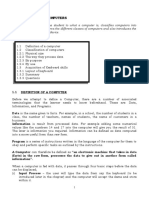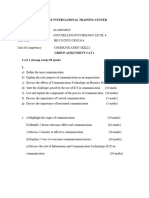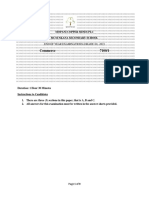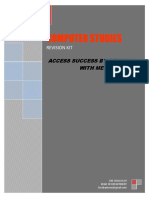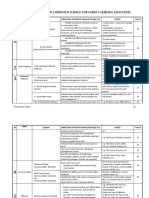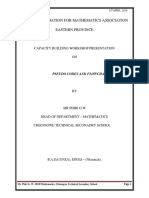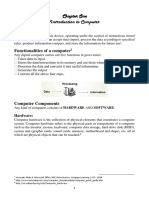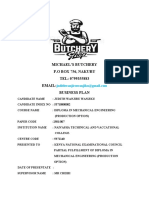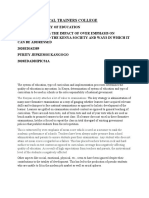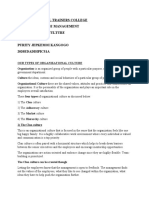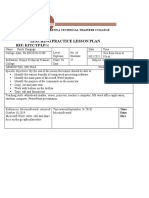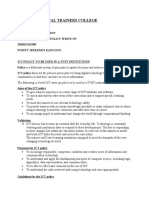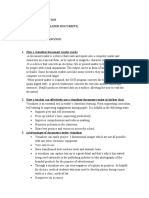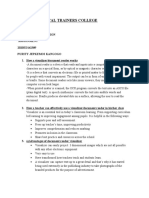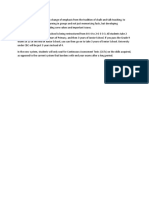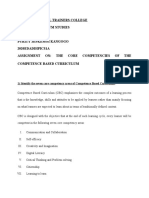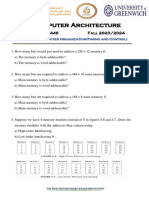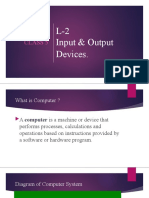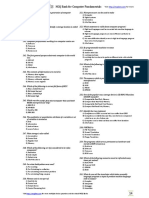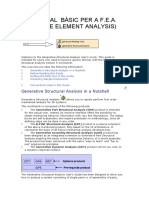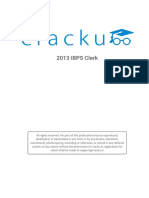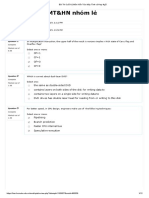a) Concepts of ICT – Terminologies
i) Computer
This is an electro-magnetic device that can be programmed to accept data (input),
process it into useful information (output) and store for later reuse (retrieve).
ii) Computer system
A system is a group of two or more interrelated components or subsystems that
serve a common purpose. A computer system comprises of input, processing,
storage and output devices.
iii) Data
This refers to a collection of disorganized figures, facts, statistics, opinions or
predictions that are not useful for decision making.
-Also refers to the raw facts which have not been processed
iv) Information
This is processed data which is in a form that is meaningful for decision making
v) Information Communication Technology
Is an integration of computers, communication and other technologies applied to
the collection and storage of data that is subsequently processed and transmitted
with the intention of providing information to the recipient or decision makers
vi) Computer- Based Information Communication System (CBIS)
This comprises of computer hardware, computer software, data/information,
people/users, procedures and communication devices (network)
b) Functions of ICT
i) Functions of ICT in an organization
- It increases operational efficiency
- Enhances employee productivity
- Improves customer service
- Increases customer satisfaction
- Promote effective decision making
- Enables development of competitive products
- Enables Strategic Planning for future expansion
ii) Advantages of computer systems
- High speed processing
A super computer can process one trillion arithmetic operations in one second.
- Handle large volume of repetitive tasks
It can prepare a payroll by calculating hours worked, rate per hour, total
wages, various deductions and net wages for thousands of employees without
getting bored.
- Has logical ability
Able to distinguish between numbers and decide which one is greater,
negative or positive
- Remote processing
Through time sharing and telecommunication, many persons at different
locations can use the same computer at one location for information
processing eg ATM banking or air-time top up.
- Enhance productivity
Productivity increase once workers learn to use computers to perform their
duties better and faster
- Accelerate decision making
Managers can sort issues faster and make better decisions
- Reduce operation costs
Computers help to hold down the costs of labor, energy and paper work
- Reduce storage space
Information can be stored in computer components which occupy smaller
space unlike paper
iii) Disadvantages of computers
- High initial costs-requires high initial cost to purchase and install the
computers
- Require skilled operators-Training needs to be done for the computer
operators
- Cause health problems-use of computers causes health related problems
such as neck ache, eyes
- Reduce employment opportunities-one computer can perform several tasks
that could have been performed by several people hence causes
unemployment
Greater loss of data in case of breakage or system
COMPONENTS OF A COMPUTER
1.HARDWARE
2.SOFTWARE
HARDWARE
Components of a computer
Any kind of computers consists of hardware and software.
Hardware:
Computer hardware is the collection of physical elements that constitutes a computer system.
Computer hardware refers to the physical parts or components of a computer such as the
monitor, mouse, keyboard, computer data storage, hard drive disk (HDD), system unit (graphic
cards, sound cards, memory, motherboard and chips), etc. all of which are physical objects that
can be touched.
Input Devices
Input device is any peripheral (piece of computer hardware equipment to provide data and
control signals to an information processing system such as a computer or other information
appliance. Input device Translate data from form that humans understand to one that the
computer can work with. Most common are keyboard and mouse.
Example of Input Devices: -
1. Keyboard
2. Mouse (pointing device)
3. Microphone
4. Touch screen
5. Scanner
6. Webcam
7. Touchpads
8. MIDI keyboard
9. Graphics Tablets
10. Cameras
11. Pen Input
12. Video Capture Hardware
13. Microphone
14. Trackballs
15. Barcode reader
16. Digital camera
17. Joystick
18. Gamepad
19. Electronic Whiteboard.
Central Processing Unit (CPU)
A CPU is brain of a computer. It is responsible for all functions and processes. Regarding
computing power, the CPU is the most important element of a computer system.
The CPU is comprised of three main parts:
Arithmetic Logic Unit (ALU): Executes all arithmetic and logical operations. Arithmetic
calculations like addition, subtraction, multiplication and division. Logical operation like
compare numbers, letters, or special characters.
Control Unit (CU): controls and co-ordinates computer components.
1. Read the code for the next instruction to be executed.
2. Increment the program counter so it points to the next instruction.
3. Read whatever data the instruction requires from cells in memory.
4. Provide the necessary data to an ALU or register.
5. If the instruction requires an ALU or specialized hardware to complete, instruct the hardware
to perform the requested operation.
Registers: Stores the data that is to be executed next, "very fast storage area".
Computer Memory
Primary Memory:-
1. RAM: Random Access Memory (RAM) is a memory scheme within the computer system
responsible for storing data on a temporary basis, so that it can be promptly accessed by the
processor as and when needed. It is volatile in nature, which means that data will be erased once
supply to the storage device is turned off. RAM stores data randomly and the processor accesses
these data randomly from the RAM storage. RAM is considered "random access" because you
can access any memory cell directly if you know the row and column that intersect at that cell.
2. ROM (Read Only Memory): ROM is a permanent form of storage. ROM stays active
regardless of whether power supply to it is turned on or off. ROM devices do not allow data
stored on them to be modified.
Secondary Memory:-
Stores data and programs permanently: it’s retained after the power is turned off
1. Hard drive (HD): A hard disk is part of a unit, often called a "disk drive," "hard drive," or
"hard disk drive," that store and provides relatively quick access to large amounts of data on an
electromagnetically charged surface or set of surfaces.
2. Optical Disk: an optical disc drive (ODD) is a disk drive that uses laser light as part of the
process of reading or writing data to or from optical discs. Some drives can only read from discs,
but recent drives are commonly both readers and recorders, also called burners or writers.
Compact discs, DVDs, and Blu-ray discs are common types of optical media which can be read
and recorded by such drives. Optical drive is the generic name; drives are usually described as
"CD" "DVD", or "Bluray", followed by "drive", "writer", etc. There are three main types of
optical media: CD, DVD, and Blu-ray disc. CDs can store up to 700 megabytes (MB) of data and
DVDs can store up to 8.4 GB of data. Blu-ray discs, which are the newest type of optical media,
can store up to 50 GB of data. This storage capacity is a clear advantage over the floppy disk
storage media (a magnetic media), which only has a capacity of 1.44 MB.
3. Flash Disk
A storage module made of flash memory chips. A Flash disks have no mechanical platters or
access arms, but the term "disk" is used because the data are accessed as if they were on a hard
drive. The disk storage structure is emulated.
Output devices
An output device is any piece of computer hardware equipment used to communicate the results
of data processing carried out by an information processing system (such as a computer) which
converts the electronically generated information into human readable form.
Example on Output Devices:
1. Monitor
2. LCD Projection Panels
3. Printers (all types)
SOFTWARE
software, instructions that tell a computer what to do. Software comprises the entire set of
programs, procedures, and routines associated with the operation of a computer system.
System software- System software is a type of computer program that is designed to run a
computer's hardware and application programs. If we think of the computer system as a
layered model, the system software is the interface between the hardware and user
applications. ... System software is used to manage the computer itself.
Examples of system software include operating systems (OS) like macOS, GNU/Linux,
Android and Microsoft Windows, computational science software, game engines, search
engines, industrial automation, and software as a service applications
Application software- application software is a computer program designed to help people
perform an activity eg word, excel
.
c) Classification of computers
d) Classified according to:
i) purpose
ii) size
iii) speed
i) Classification by purpose
Analog Computers
These are computers that perform logical operations by measuring changes in
physical magnitudes and convert them to numeric values. These computers
process data that is in a continuous form or measurable quantities/units. Analog
data includes physical variables like temperature, pressure, length, weight,
electrical voltages and resistance.
-Analog computers include thermometers, weighing scales, voltmeters and
speedometers.
-These computers are used mainly for scientific and engineering purposes because
they deal with quantities that vary constantly.
-They give approximate results and are applied in industries, post office and
weather stations
-Handles small volume of data.
Digital Computers
. These computers process data that is represented in the form of discrete or
individually distinct form usually in a binary or two state formats/digits 0 and 1.
In the binary system, each 0 and 1 is called a bit and a group of 8 bits is 1 byte.
Example of these devices include digital clock.
-handles high volume of data and gives accurate information
Hybrid Computers
These are computers that have the combined features of both the digital and
analog computers. Example is where patient’s vital signs like temperature, heart
functions etc are measured and converted to numbers and supplied to the digital
components that monitor the patient’s vital signs. A fluctuation can thus be
noticed immediately.
ii) Classification by size
- Super computers
These are the most powerful, fastest, big in size and most expensive
computers. Only a few of these are manufactured each year because only a
few organizations need and can afford their processing capabilities. They have
large memories and high processing speeds so fast that they can process
nearly a billion transactions per second and nearly a trillion arithmetic
operations at the same time. They apply parallel processing.
Application
Worldwide weather forecasting and analysis of weather
phenomena
Produce images that can be incorporated into movies
Aircraft design
Mathematical research
- Main frames
These are large, general purpose computers which can serve 100 or more end
users.
They are fast with large storage capacities.
Application
Processing of high-volume batch applications eg in banks
Management of very large centralized databases
To control access, interpret queries and retrieve & update records
Ideal for transaction processing, financial applications, payroll
calculations and airline reservations.
- Mini computers
These are computers which are neither too big nor too small in size
They are designed to accommodate more than one user
The are a bit costly than micro computers
Their processing speed is a bit faster than micro computers
They have a large storage capacity than microcomputers and lesser
than mainframe computer
- Micro computers
These are computers that are small in size
They are designed for single user
They have low processing speed
They are less costly compared to others
They have small processors
They have small storage capacity
- Desktops
These are a type of microcomputers also called Personal Computers
(PCs).
They are compact, powerful and versatile machines
They generally serve a single user
The desktop type may be one integral unit having monitor and CPU or
may be separate ( Tower units)
- Laptops
These are powerful portable computers
They are designed for single user
They have low processing speed
They are less costly compared to others
They have small processors
They have small storage capacity
They use battery when not connected to main electricity
- Palm tops/microcontrollers/
Also called hidden, embedded, dedicated computers
They are restricted to perform a restricted number of tasks eg
calculator
iii) Computer Generations
The history of computer development is often referred to in reference to the different generations
of computing devices. A generation refers to the state of improvement in the product
development process. This term is also used in the different advancements of new computer
technology. With each new generation, the circuitry has gotten smaller and more advanced than
the previous generation before it. As a result of the miniaturization, speed, power, and computer
memory has proportionally increased. New discoveries are constantly being developed that affect
the way we live, work and play.
Each generation of computers is characterized by major technological development that
fundamentally changed the way computers operate, resulting in increasingly smaller, cheaper,
and more powerful and more efficient and reliable devices.










